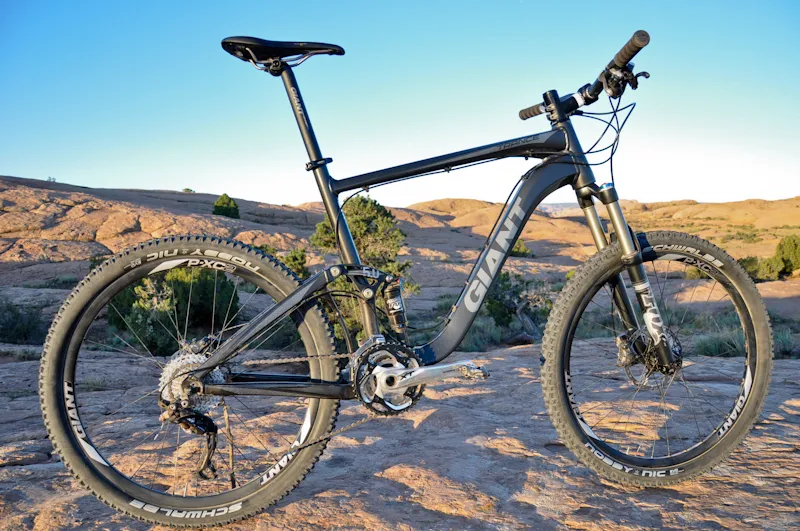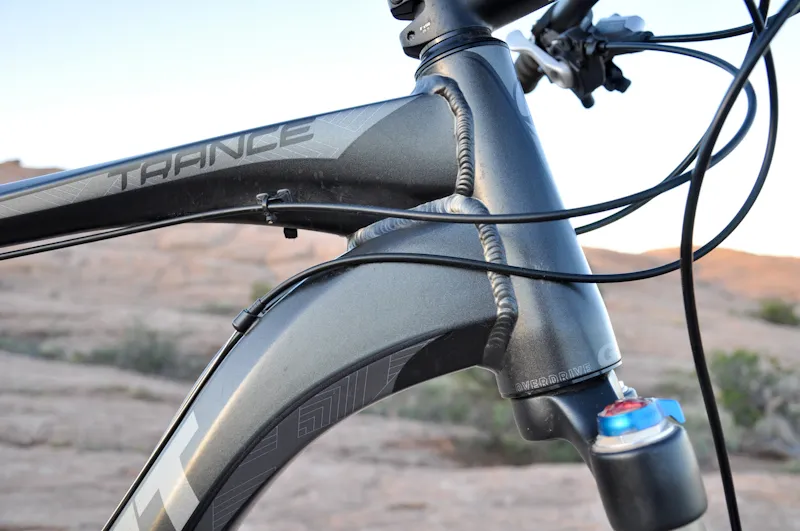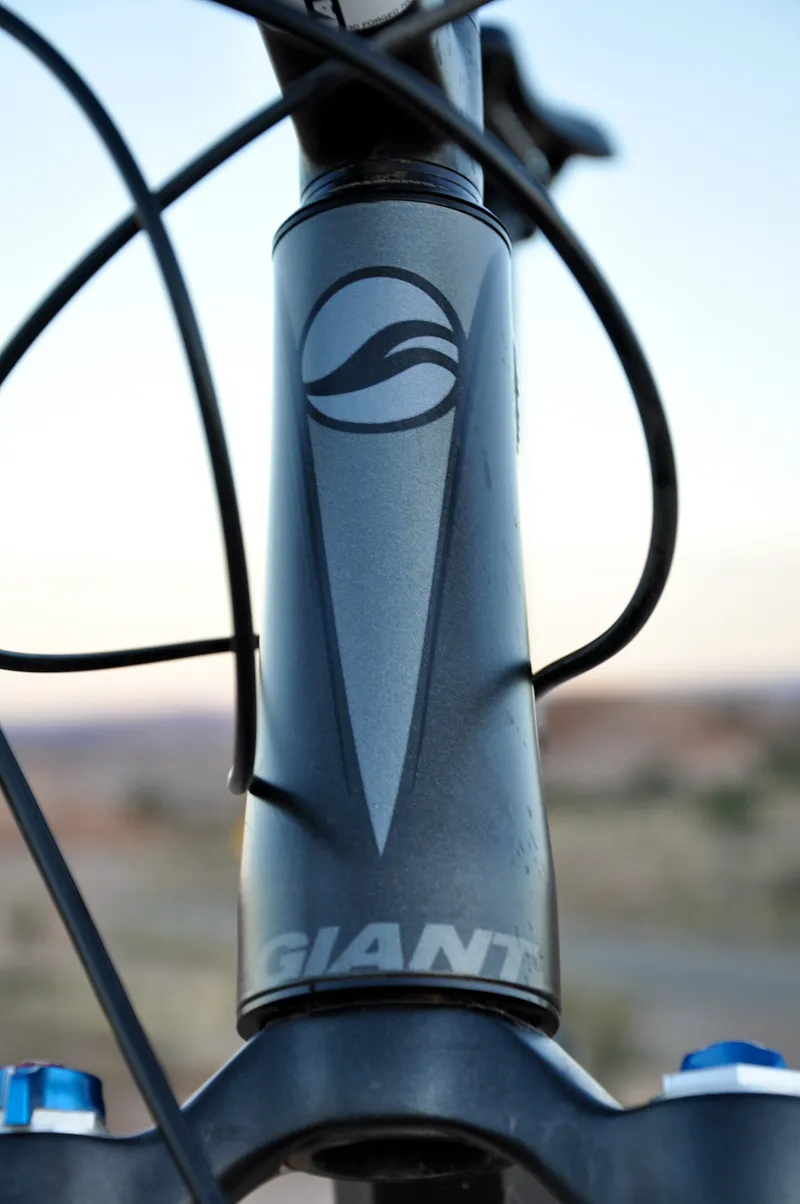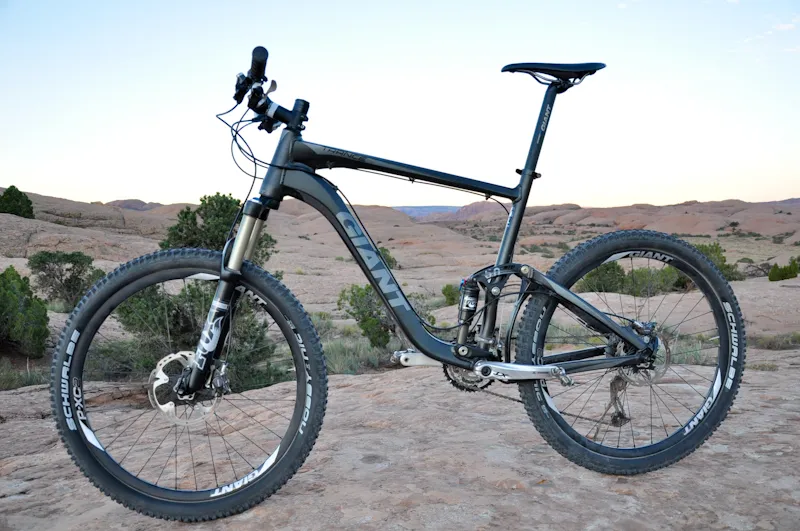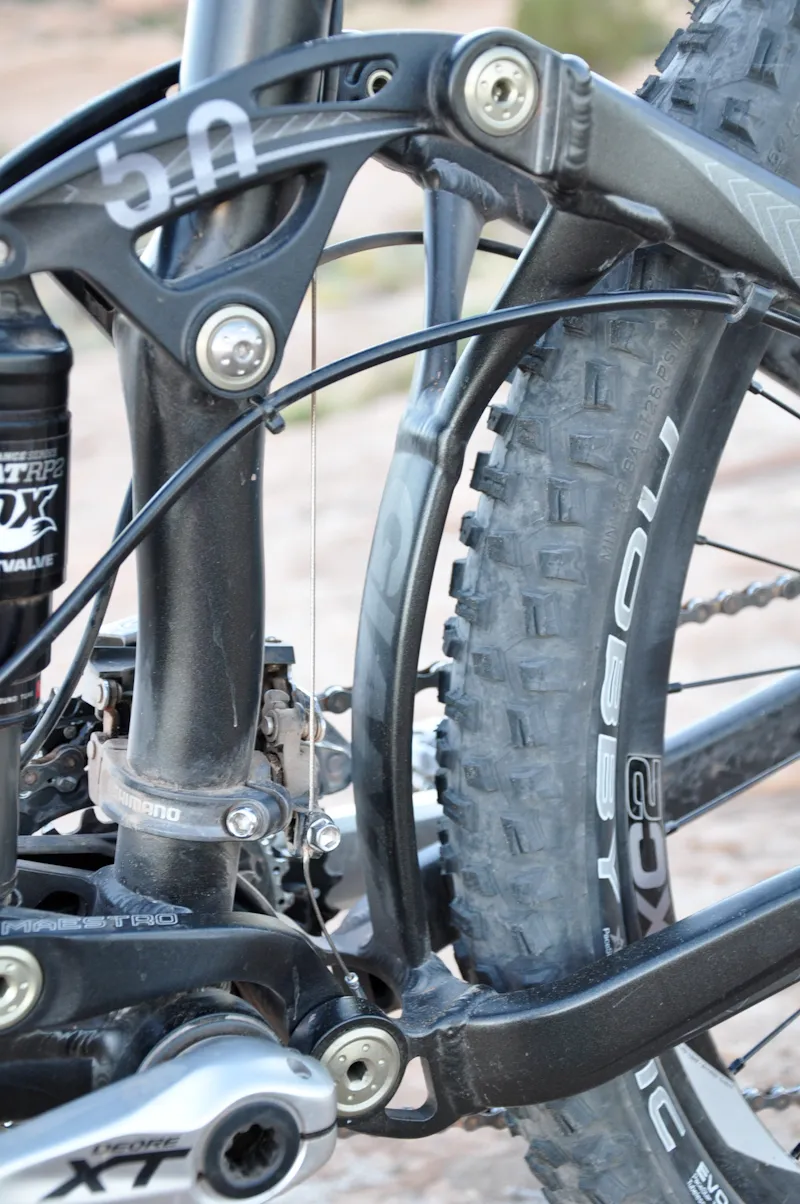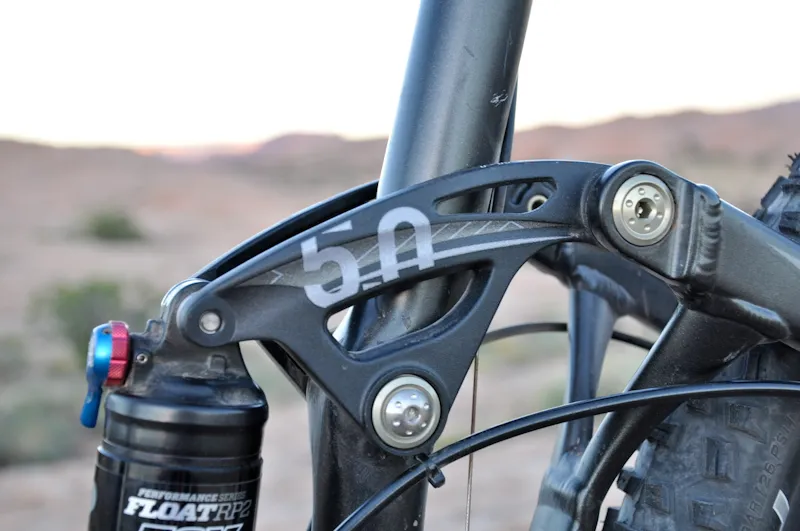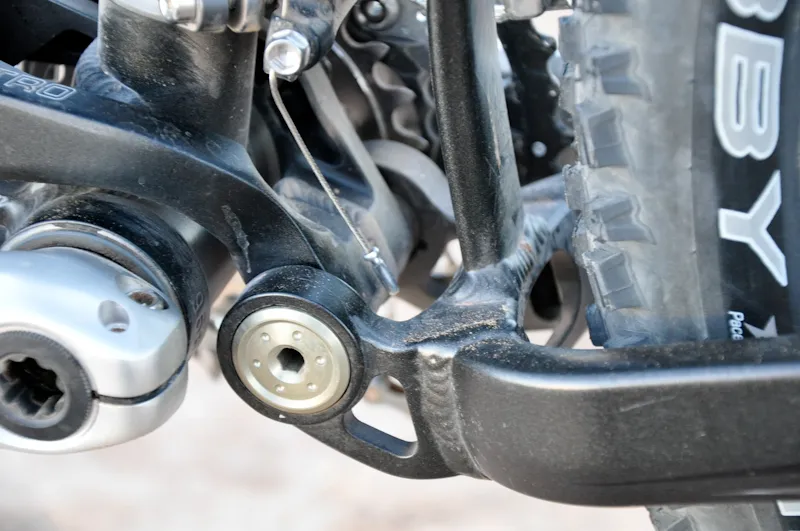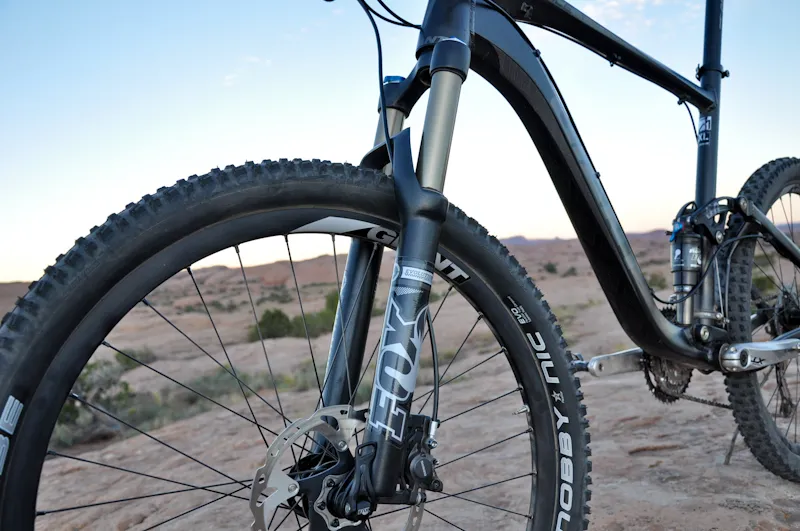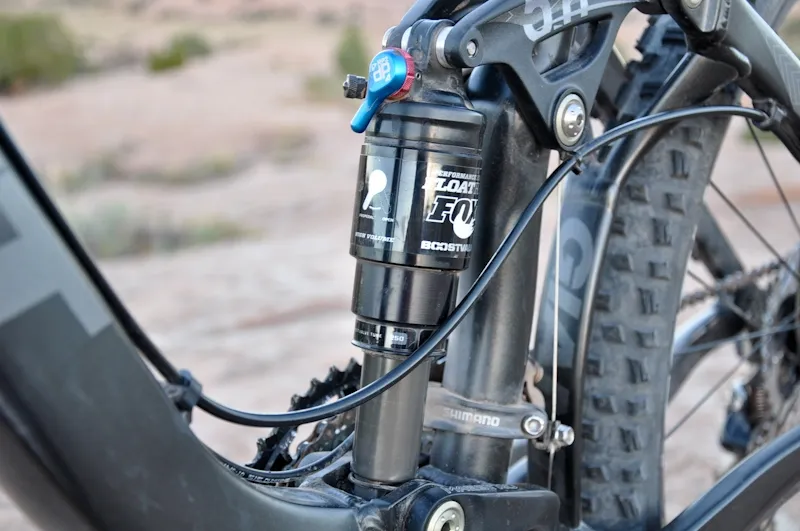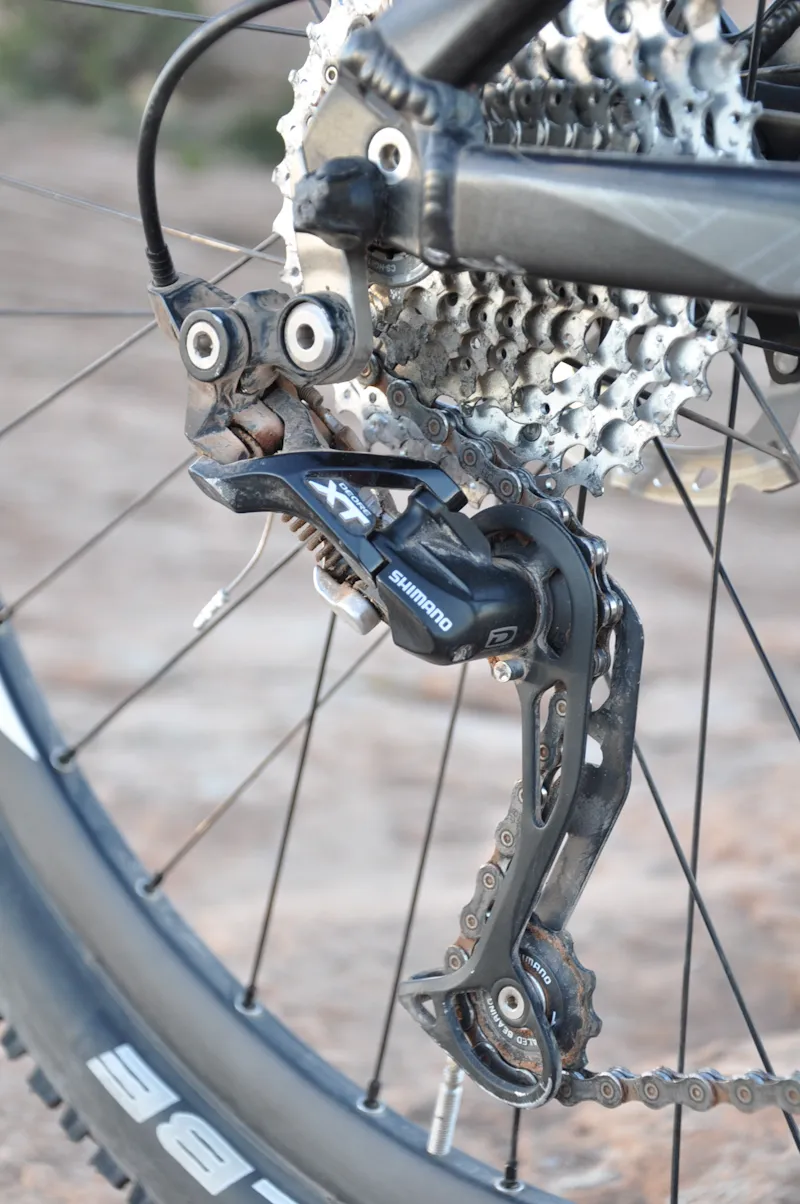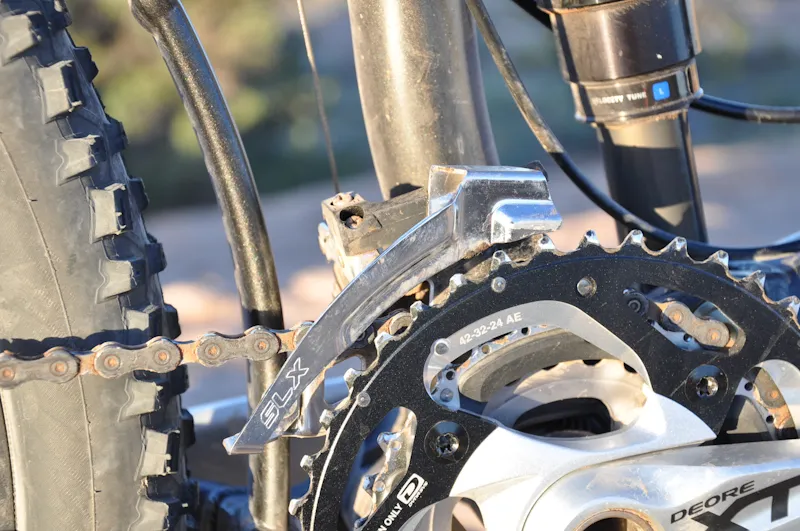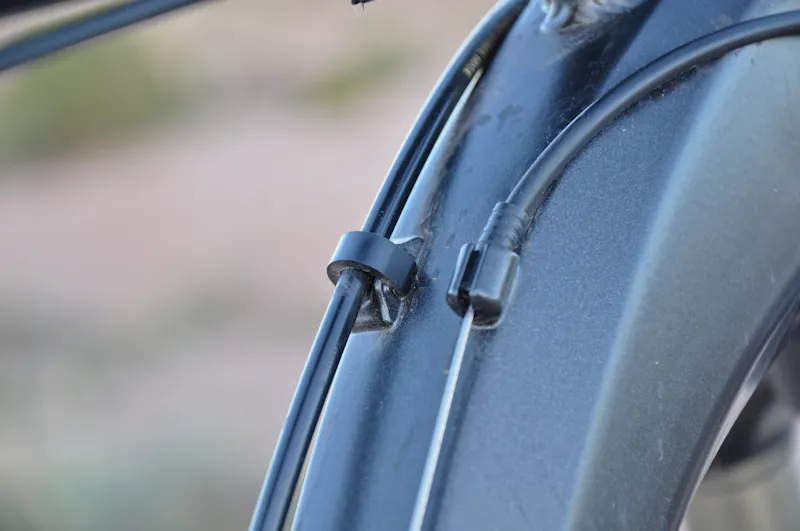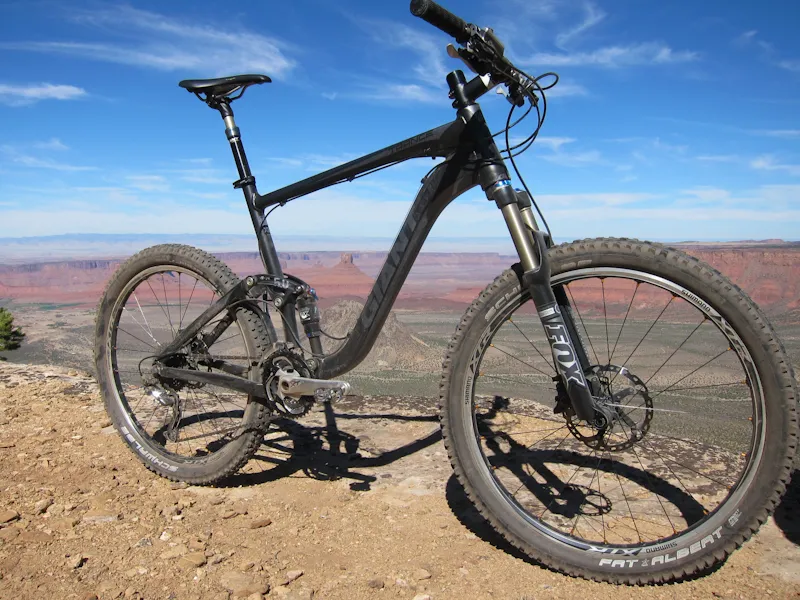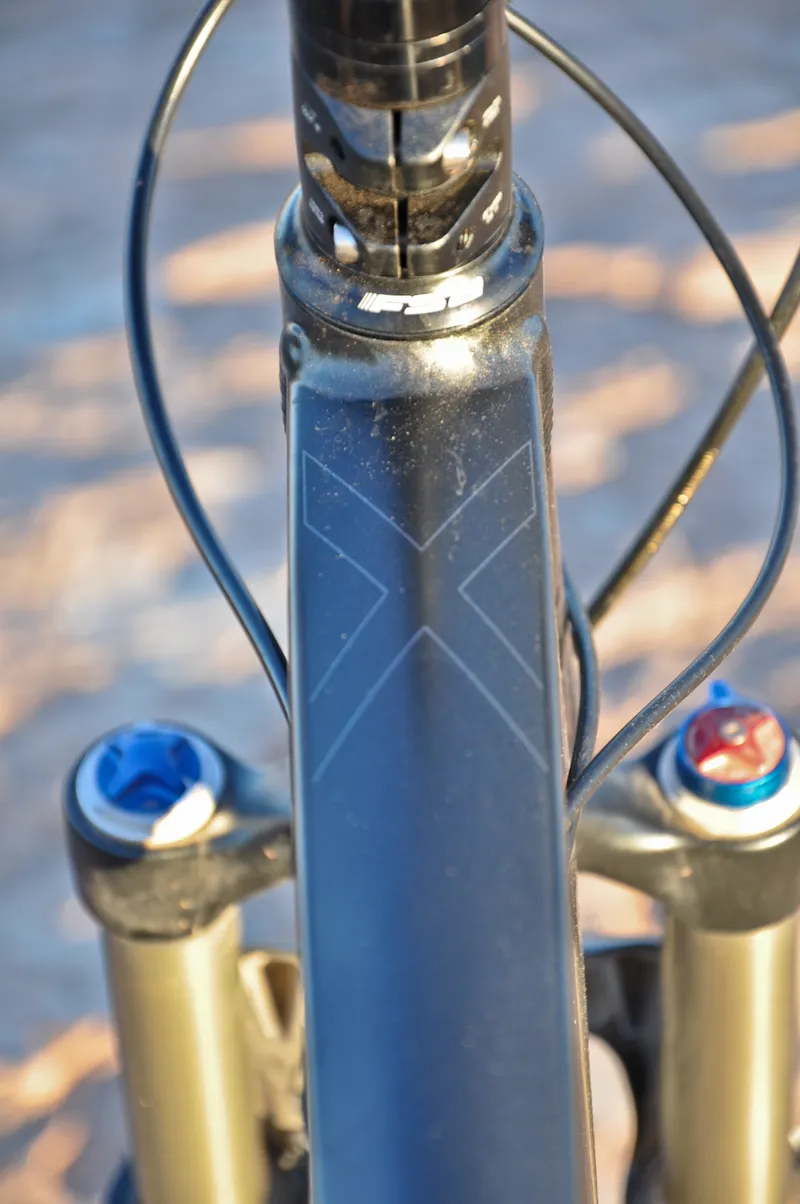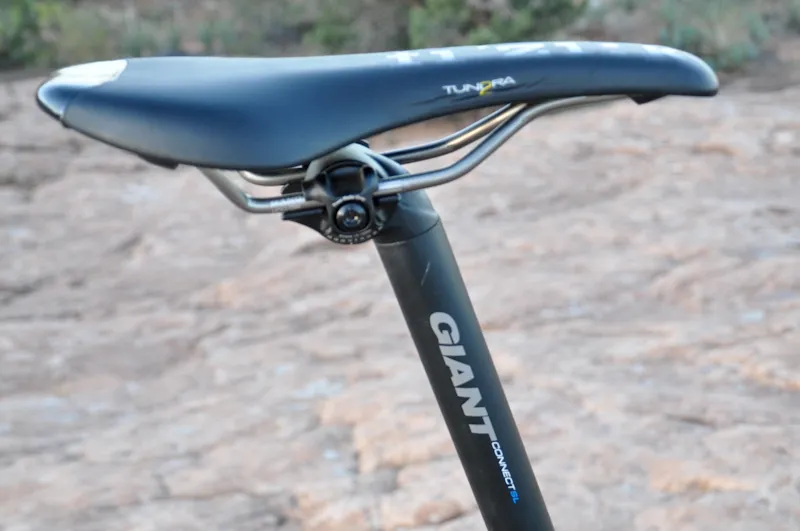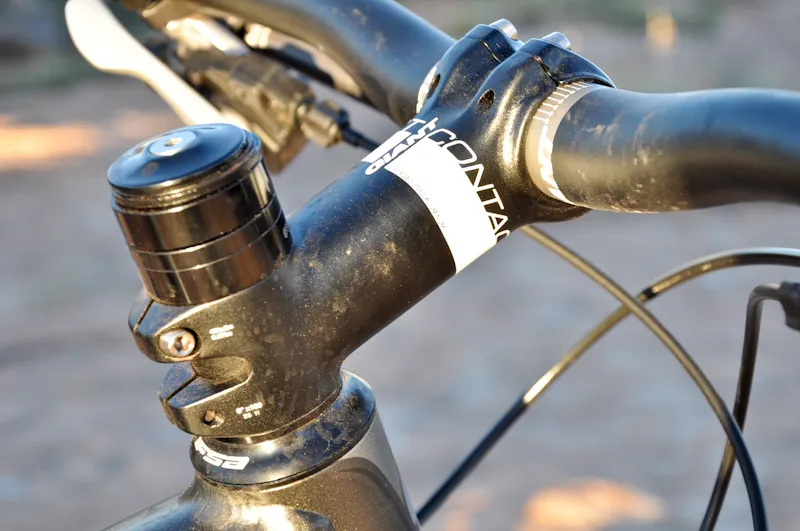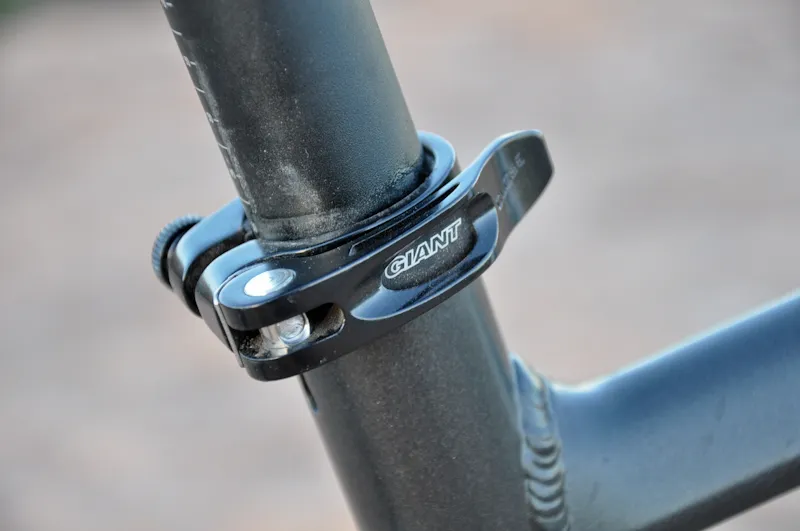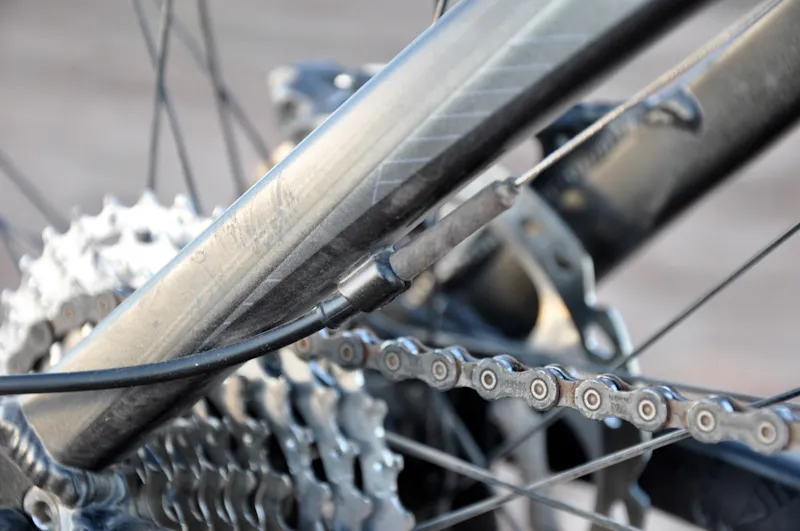The 2012 Giant Trance X1 is a bike that's more than comfortable in a surprisingly broad array of situations. While many of the latest 'do-it-all' machines have trickled down from big-hit design and emphasize descending prowess over climbing ability, the 5in-travel Giant feels like a true mountain bike. It's reminiscent of the days before having a quiver of bikes for different disciplines was really an option.
Ride & handling: Top all-rounder, now with improved front end stiffness
By today's frame trends, the Trance X1‘s 69.5° head angle is relatively steep. But somehow the Giant never felt like a wound-up catapult on descents, save one or two extremely steep drops that were luckily made but categorically beyond the intended use of a 5in-travel trail bike. On climbs, the head angle offered great steering.
The bottom bracket is high enough that you can pedal through an impressive amount of rough stuff, but low enough to offer a nice, anchored feeling through turns and on steep trail. Similarly, the 17.1in chainstays are short enough to give the bike a playful feel but long enough to keep the rear end stable at high speeds.
On steep, rocky and rough descents like Moab’s Portal Trail where 36mm stanchions and 20mm through-axles are the weapons of choice, the Trance X1’s front end held its ground amazingly well. Giant's new OverDrive 2 tapered steerer standard – which bumps the top bearing size from 1-1/8 to 1-1/4in, while leaving the bottom bearing at 1-1/2in – allowed our 15QR, 32mm-stanchioned Fox Float to flirt with the same kind of stiffness as the aforementioned forks.
Recovery from directional errors was noticeably improved over a standard tapered system, and the new-found stiffness was a boon on high-speed trails like Porcupine Rim, too, offering precision steering that was only limited by rider nerve and slower traffic. Yet momentum on flats and climbs was unhindered by the added bulk usually associated with such a stable handling platform.
Climbing on the Trance X1 with the Fox RP2 rear shock fully open was perfectly efficient while seated but did get a little bouncy while cranking out of the saddle. A quick flip of the lever to ProPedal, however, and it climbed with the best of them. The 27.2lb (12.3kg) weight on our size XL with a mid-range build definitely wasn’t going to offer any excuses on sluggish climbing performances, either.
The Maestro suspension soaked up the small stuff well and offered just enough progression to absorb medium and big hits with an almost-bottomless feel. With the RP2 shock’s rebound damping set in the middle, the bike rebounded nicely into its neutral position and liked to stay at the set sag when not absorbing trail obstacles. Pedaling in the small, middle or big ring didn’t seem to affect suspension performance, either.
After a fair share of time spent on last year’s Trance X, and about a dozen hours on the 2012 bike, it’s safe to say that the 5in-travel Giant is a definite favorite. Serious cross-country racers will want something lighter and racier, all-mountain riders will want something that holds up better to abuse with more lax angles, but for riders who just like to ride trail, and maybe enter a few Super-Ds or an occasional cross-country race, but don’t want a stable of bikes to do so, the Trance X1 is hard to beat.

A tapered head tube and hydroformed tubes do their share to add front-end stiffness on the Trance X1
Chassis: Proven frame will well balanced suspension
The Trance X frame is unchanged for 2012, with its hydroformed tubes and proven Maestro suspension design. It still has a standard OverDrive head tube designed for 1-1/8 to 1-1/2in forks; this has been made compatible with the new OverDrive 2 standard by way of a new upper bearing assembly.
After a long weekend on the bike in Moab and Fruita, it’s safe to say that the extra 1/4in on the steerer makes a sizable difference. Fox Racing Shox, Marzocchi and RockShox seem to agree, as they're all on board with the new standard. Several stem manufacturers are either already offering the new clamp size or planning to. So what was the motivation for adding yet another flavor to the already-percolating pot of bicycle industry standards?
Giant claim OverDrive 2 offers 30 percent more torsional steering stiffness than their standard Overdrive system, for only a negligible weight increase. For smaller, more casual riders, this may sound like Spinal Tap's Nigel Tufnel explaining why his amp goes to 11, but for larger, more aggressive riders, this boost in front-end stability makes a noticeable difference out on the trail.
Fox’s Float fork and RP2 rear shock offered great suspension balance, with just enough adjustability to dial the ride in well. The OverDrive 2 steerer tube often triggered short-term memory loss as to exactly what fork was up front, as it usually didn’t feel like it only had a 15mm axle or 32mm stanchions.
A more expensive RP23 shock would offer a bit more refinement and adjustment to counter the Trance X’s trait of bouncing a bit out of the saddle, but the RP2 should keep the majority of riders happy and didn't t detract from an otherwise impressive suspension platform.
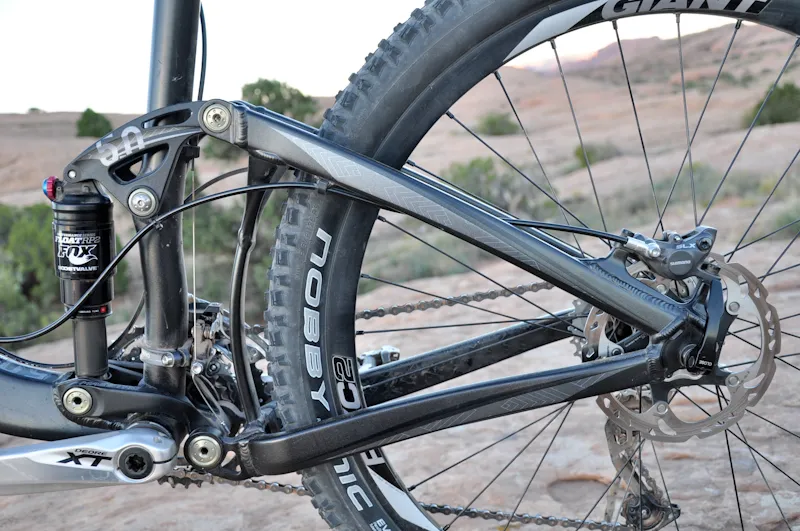
Five inches of Maestro suspension ate up just about everything Moab threw at the Trance X1
Equipment: Quality Shimano kit and Schwalbe tires plus reasonable own-brand bits
The Trance X1’s drivetrain is mostly Shimano Deore XT (the front derailleur is SLX) and worked flawlessly. Whether or not the sealed housing ferrels had anything to do with the light, crisp shifting, they were greatly appreciated on this mid-range build.
It almost seems like Shimano have messed up with their new SLX brakes and Ice Technology discs – take away XTR’s shiny finish and slightly more streamlined lever body, add a little weight, and voila! Brakes that seem to work just as well as the top-tier set, at a fraction of the cost.
Giant’s house-brand alloy Contact stem, bar and seatpost all offered easy adjustment and standard measurements. While perfectly adequate, they’re not the lightest available by any means, and would be a good starting point for lightening up the Trance X1, if desired.
The Giant wheels got the job done without issue on less-technical terrain but aren’t tubeless-ready and were pre-emptively swapped out for a tubeless wheelset for most of the rock-laden riding in Moab. A quick trip to the shop for tubeless rim strips would solve the problem, but tubeless wheels would be a good upgrade for those desiring to drop a little weight and potentially gain a bit of performance.
Unlike the cheap, flimsy and traction-free tires that come on many stock bikes to keep price and weight down, Giant are spec’ing many of their 2012 models with Schwalbe rubber. The Trance X1’s Nobby Nics offered great traction, worked fantastically set up tubeless and, most importantly, didn’t end up in the rubber recycling bin from the get-go.
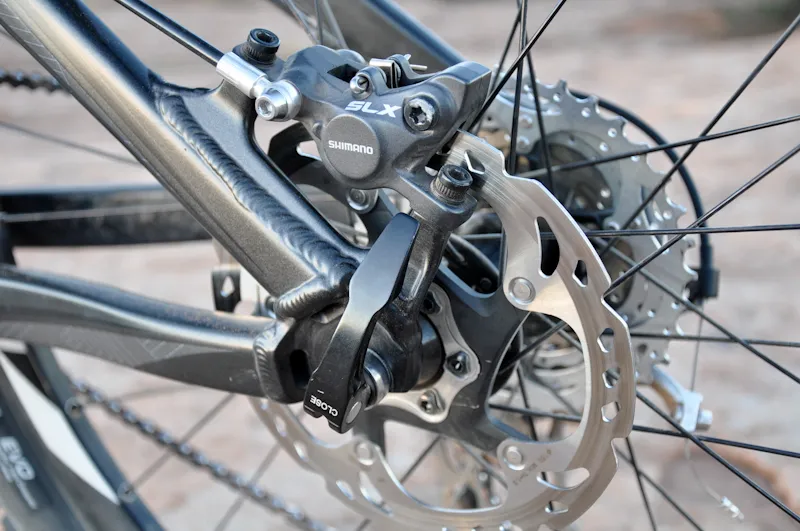
Shimano’s SLX brakes with Ice Tech discs worked impressively well
